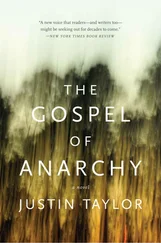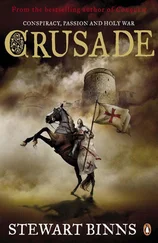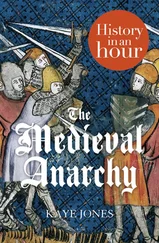EXTREME UNCTION
The anointing of the sick or dying carried out in extremis as part of the last rite of passage. The last rites traditionally include three elements: penance, unction (anointing) and receiving the Eucharist (Christ’s sacrament) in order to prepare the dying person for the next life. FITZ
A prefix to patronymic surnames of Anglo-Norman origin. This usage derives from the Norman fiz or filz (son of) which was coupled with the name of the father (for example, FitzGilbert, meaning ‘son of Gilbert’) as in the Scandinavian tradition of adding -son behind the father’s name, and the Gaelic traditions: ‘Mac’ and ‘O’.
FUTUWWA
An Arabic term that has similarities with chivalry and virtue. It was also a name of ethical urban organizations or ‘guilds’ in medieval Muslim realms that emphasized honesty, peacefulness, gentleness, generosity, hospitality and avoidance of complaint in life. In modern-day dialects of Arabic (for example, in Egypt) the term is sometimes used for youths who do quasi-chivalrous acts such as helping others resist intimidation by rival groups.
GARDEROBE
The term garderobe describes a place where clothes and other items are stored, and also a medieval toilet. In European public places, a garderobe denotes the cloakroom, wardrobe, alcove or an armoire. In a medieval castle or other building, a garderobe was usually a simple hole discharging to the outside leading to a cesspit or into the moat, depending on the structure of the building. Such toilets were often placed inside a small chamber, leading by association to the use of the term garderobe to describe them.
GELD
Another word for money in Dutch and German ( gelt in Yiddish), in medieval England it meant tax, or tribute or a ransom – as in Danegeld.
GOLDEN HORN
The Golden Horn is an inlet of the Bosphorus to the east of the city of Constantinople (Istanbul) forming a natural harbour that has sheltered ships for thousands of years. It is a scimitar-shaped estuary that joins the Bosphorus just at the point where that strait enters the Sea of Marmara, thus forming a peninsula, the tip of which is ‘Old Istanbul’ (ancient Constantinople).
GONFALON
A small tailed flag or banner, flown from the top of a lance or pole to indicate lordly status, common throughout Europe. It would carry the colours, crest or heraldry of its owner.
GRAND DOMESTIC
The title of Megas Domestikos , or the Grand Domestic in English, was given to the commander-in-chief of the Byzantine land army. Its exact origin is somewhat unclear; it is first mentioned in the ninth century, and derives from the domestikos of the scholai , with the epithet megas added to connote the supreme authority of its holder. Both titles appear to have co-existed for a time, until the Megas Domestikos fully replaced the earlier office by the mid-eleventh century. In the Comnenian period, in an echo of the tenth-century arrangements, the Megas Domestikos would command the entire field army of the Empire.
GREEK FIRE
The secret weapon of the Byzantine emperors. A sort of ancient napalm, it was invented by a Syrian engineer, a refugee from Baalbek, in the Egyptian city of Heliopolis in 673 ad. The mix of ingredients, a closely guarded secret, was reputedly handed down from emperor to emperor. It has remained a secret to this day, but was thought to be a combination of pitch, sulphur, tree resin, quicklime and bitumen. The key ingredient may well have been magnesium, which would explain why the ‘fire’ would burn under water. Varieties of it began to be used by other navies, most using pitch. The ‘fire’ was often poured into wooden barrels or clay pots before being lit and hurled at the enemy. HAUBERK
A chain-mail ‘coat’, worn like a long pullover down below the groin. Hauberks for the infantry were slightly shorter so that the men could run in them, and were only split at the sides. Cavalry hauberks extended to the knee and were split front and back. The mail could extend into a hood (ventail), like a balaclava, but had a flap in front of the throat and chin that could be dropped for comfort when not in the midst of battle. Three kinds of mail were used and were progressively more expensive: ordinary ring mail, scale mail and lamellar mail (when overlapping individual plates were fastened together by leather thongs).
HEARTHTROOP
The elite bodyguard of kings, princes and lords of the ninth, tenth and eleventh centuries.
HERALDIC TERMS
Azure: blue
Bend: diagonal stripe like a sash
Field: background of a shield, usually consisting of colours or metals (tinctures) or symbolic vair
Gold (or): yellow
Gules: red
Roundel: sphere
Sable: black
Tierce: A third part of a shield (background), usually a band down the left-hand side
Vair: variegated furs (ermine, squirrel, etc)
HOUSECARLS
The elite troops of the Anglo-Saxon kings, following their establishment by King Cnut in 1016, in the Danish tradition. Cnut brought his own personal troops to supplement the English fyrd (citizen army) when he succeeded to the throne following the death of Edmund Ironside.
JIHAD
Jihad is a religious duty of Muslims. In Arabic, the word translates as a noun meaning ‘struggle’. Jihad appears 41 times in the Quran and frequently as the expression ‘striving in the way of God’. A person engaged in jihad is called a mujahid; the plural is mujahideen. Jihad is an important religious duty for Muslims. A minority among the Sunni scholars sometimes refer to this duty as the sixth pillar of Islam, though it occupies no such official status. In Shi’a Islam, however, Jihad is one of the Ten Practices of the Religion. In western societies the term jihad is often translated by non-Muslims as ‘holy war’. Muslim authors tend to reject such an approach, stressing non-militant connotations of the word.
KIPCHAK BOW
A recurve-style bow used throughout Asia Minor in the Middle Ages. Like a Turkish bow, it got its name from the Kipchak tribe who, as the Golden Horde, ruled the western part of the Mongol Empire until the thirteenth century.
KIRTLE
A kirtle is a long tunic-like dress worn by women in the Middle Ages into the baroque period. The kirtle was typically worn over a chemise or smock and under a formal outer garment or gown.
LAMPREY
Sometimes also called lamprey eels, lampreys are an eel-like order of jawless vertebrates, characterized by a toothed, funnel-like sucking mouth. The common name ‘lamprey’ is derived from lampetra , which translated from Latin means ‘stone licker’ ( lambere ‘to lick’ + petra ‘stone’).
LEINE
The leine is a unisex smock of Celtic peoples, not unlike a Roman toga. The word means ‘shirt’ and early descriptions from the fifth to the twelfth centuries talk of a long smock-like linen garment, ankle-length or knee-length, either sleeveless or with straight sleeves.
LEVUNIUM, BATTLE OF
A decisive battle on 29 April 1091, when the Byzantine Emperor Alexius I defeated the army of his rivals, the Pechenegs, a semi-nomadic people from the Central Asian Steppes, thus removing their long-term threat to the Empire.
LODESTONE
A lodestone is a naturally magnetized piece of the mineral magnetite. Ancient people first discovered the property of magnetism in lodestone. Pieces of lodestone, suspended so they could turn, were the first magnetic compasses and their importance to early navigation is indicated by the name lodestone, which in Middle English means ‘course stone’ or ‘leading stone’. One of the first references to lodestone’s magnetic properties is by Greek philosopher Thales of Miletus who, in the sixth century bc, is credited by the Ancient Greeks with discovering lodestone’s attraction to iron and other lodestones.
Читать дальше












